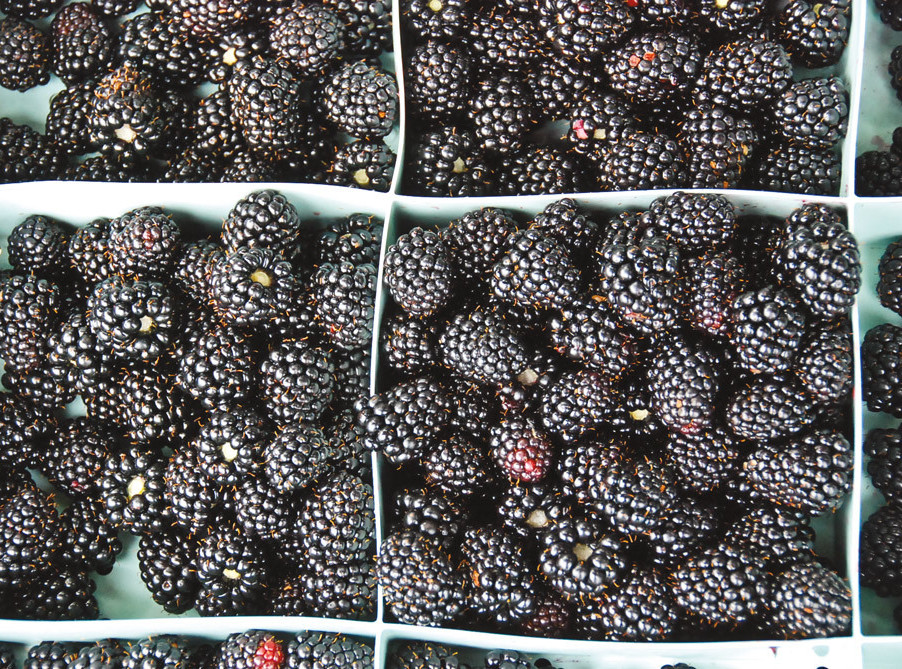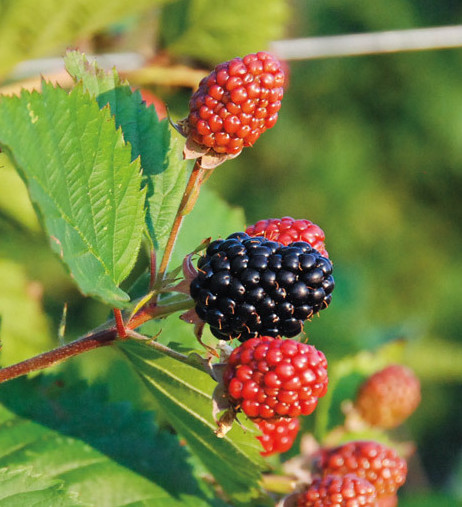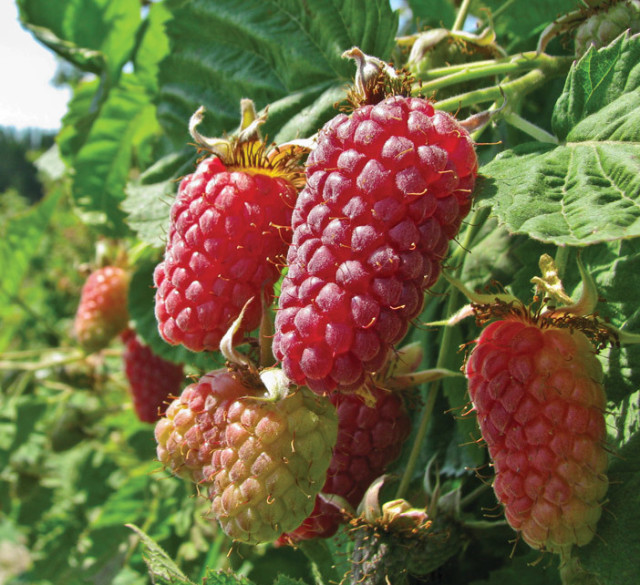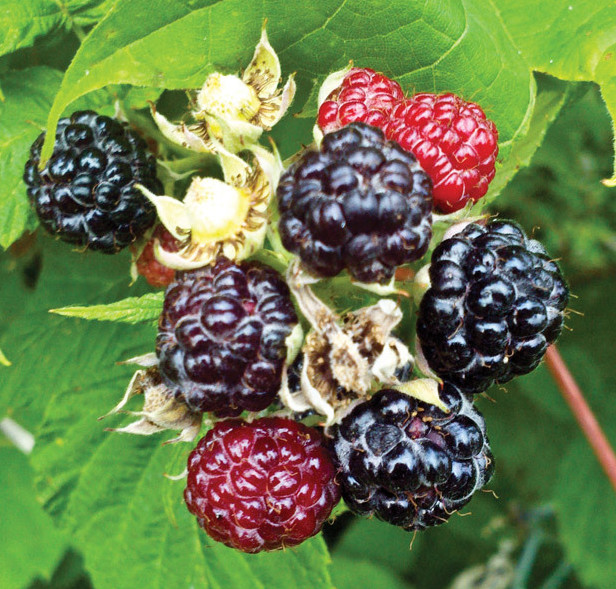Meet the Willamette Valley's Best Blackberries

Triple Crown Berries
Amid the profusion of high-summer produce, nothing screams “EAT ME” louder than the blackberries cascading into local alleys, roadsides, markets, and farm stands like a great obsidian waterfall. Turns out, Oregon’s reputation as superb berry country stretches back at least as far as 1885, according to Heather Arndt Anderson, the culinary sleuth behind recent volume Portland: A Food Biography. That’s when historian Herbert Lang decreed: “There is no country in the known world where wild berries are so common as in Oregon.” In 2013, our state’s farmers produced a nation-leading 51 million pounds of blackberries, while horticulturists at Oregon State University and their partners at the USDA’s Agricultural Research Service continue their near century-long quest to create better berry varieties. We can even celebrate the ground beneath our feet. “Our soils are rendered out of volcanic ash and pyroclastic parent material that blackberries love,” says Anderson. We feel the love, too—especially with these four transcendent varieties.

Triple Crown
Why: If there were a blackberry derby, this would be the clear winner. Local berry farm matriarch and Triple Crown grower Kathy Unger of Cornelius’s Unger Farms agrees. “It’s by far our favorite fresh eating blackberry,” she says. Crowns are succulent, with an uncanny sweet-tart balance, and each berry is as big as your damn thumb—no exaggeration.
How: Eat them out of hand. As much as we like a good blackberry pie or jam, baking is a waste of these peerless purple nuggets.
FYI: This late-season variety is available in August. First released for
commercial cultivation in 1996 after 10 years of testing by USDA researchers in Corvallis and Maryland, the berry’s name comes from its three superior attributes: vigor, productivity, and sweetness. Available at Schedeen’s Farms, Unger Farms, and West Union Gardens

Loganberry
Why: Can’t decide between blackberries and raspberries? Enjoy the best of both with this accidental 19th-century cross-pollination. Logans are midsize, juicy, and boast a unique flavor that reveals its mixed parentage with a mild, pleasant tartness.
How: Perfect as one component in a mixed-berry pie. Also, advanced consumers should consider using them to make berry wine.
FYI: Look for logans as early as mid-June, and buy them fast—their season lasts only about three weeks. Available at Schedeen’s Farms and West Union Gardens

Why: Intense berry flavor and aroma, though seedy and somewhat tart and dry
How: These babies add major attitude to pies. About a quarter portion of black caps (one cup of the standard four) in your pie filling lends brightness and bite.
FYI: Nab black caps (a.k.a. “black raspberries”) all through July; just don’t get the stubborn juice on your clothes. The USDA once used black cap dye to stamp hunks of meat for sale. Available at Schedeen’s Farms, Unger Farms, and West Union Gardens

Boysenberry
Why: Every cell (or drupelet) of this deep-maroon, supersize heritage variety bursts with sweet juice.
How: Eat straight from the carton or gently cook down, strain the juice, and use to flavor (and color) summer fruit ice cream or sorbet.
FYI: Find boysenberries mid-July to mid-August. This cross of unknown parentage was rescued from obscurity in the 1920s by SoCal farmer Walter Knott—yes, the founder of Knott’s Berry Farm. Available at Schedeen’s Farms and West Union Gardens
WHERE TO GET YOUR BERRY FIX
Schedeen’s Farms (schedeens.com) Farm stands in Gresham and Boring; booths at Irvington (Sunday) and World Trade Center (Thursday) Farmers Markets
Unger Farms (ungerfarms.com) Farm stand at 34880 SW Johnson School Rd, Cornelius; farmers markets throughout the Portland metro area.
West Union Gardens (westuniongardens.com) U-pick at 7775 NW Cornelius Pass Rd, Hillsboro
Or, keep an eye on the stands at your favorite farmers market for these and other berry varieties.




